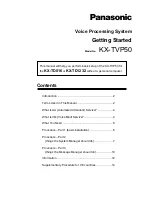
Service and Installation Manual
5
ELECTRICAL CONNECTION
The cooler must be connected to a socket with the correct voltage/frequency, as show on the nameplate.
The standard for u.s is 115V/50HZ. Voltage variations of ±10% are acceptable. Greater variations can
damage the cooler, and in such cases the factory warranty is not valid. In the case of extreme voltage
variation, above or below the standard, your local supplier will be able to advise you, what to do.
The cooler requires extra protection
according to the Danish Heavy Current Regulations.
This also applies, if a new cooler is replaced, which did not have such protection. The purpose of extra
protection, is to protect the user from dangerous electric shocks, in the case of defect.
OPERATION INSTRUCTIONS
The temperature in the cooler is automatically regulated by a pre adjusted thermostat.
The position of the cooler, the ambient temperature, the number of times the lid is opened and for how long
the lid is opened, all these factors affect the temperature in the cooler, which should therefore not be placed
in sunlight or closed to a heat-radiating surface.
If your cooler is fitted with a lock, the key should be kept out of the reach of children. If your new cooler is to
replace an older one, which is not in use any more, you should remove the lock mechanism, on the old one,
before disposing it.
STORAGE OFF FOOD STUFFS
The cooler is only designed as a conserver, and is the not suited to cold freeze foodstuffs. In other words,
only refrozen food must be placed in the cooler. Next to that the cooler must not be filled beyond the height
limit of the contents line, or in cases where there is no such line, to within 100mm below the lid. This is to
ensure the product temperature less than 36°F.
DEFROSTING THE CABINET
In the course of time, a frost layer will be naturally formed within the cooler.
When this layer is 5-8mm thick, the cabinet should be defrosted the following way:
—remove the plug from the socket;
—open the lid and leave it open;
—loosen the frost layer using a plastic or wooden scraper.
The defrosting process can be speeded up by using bowls of hot water.
Never use sharp or pointed instruments
After final defrosting, the cabinet should be cleaned as described in section: Maintenance. the cabinet
should be thoroughly dried after cleaning.






























